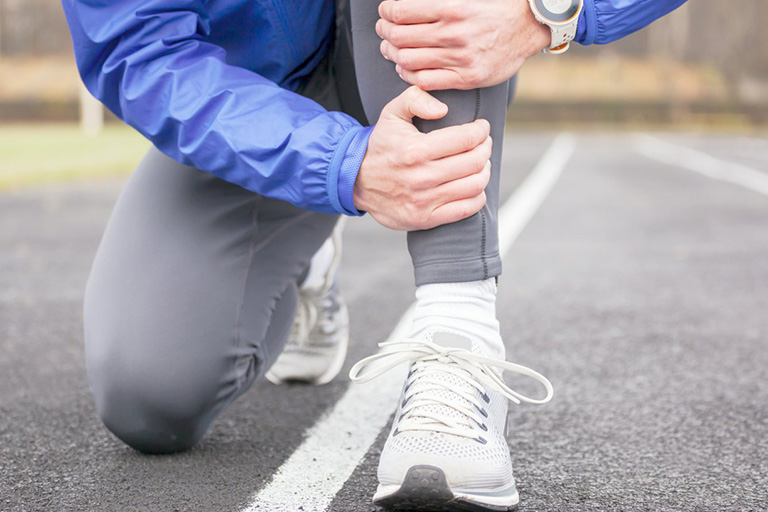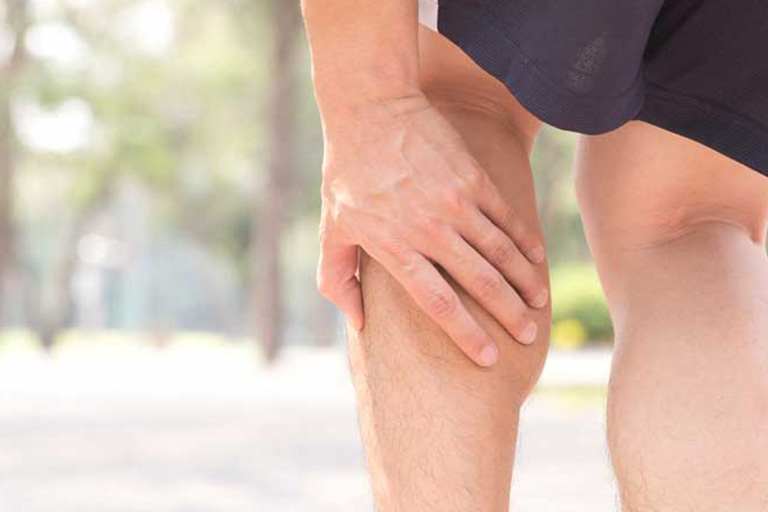- Mon - Fri | 9:00AM - 9:00PMSat - Sun | 9:00AM - 5:00PM
Knee and Leg

Knee Ligament Injuries
Ligaments are tough bands of tissues that connect the bones in your body. There are many ligaments surrounded in the knee. But four major ligaments are plays an important role on the knee. The four ligaments names itself says where it is placed. These four ligaments are more prone to injury. Ligament damage often happens from a sports injury.
ACL is most commonly injured knee ligament. You may have pain often sudden and severe, a loud pop or snap during the injury, a feeling of looseness in the joint (when the feet stay planted one way, but the knees turn the other way). ACL tears, you may not need surgery. We must get a prompt and accurate diagnosis to determine the severity of the injury.
We have to unique ACL rehab program developed by our physiotherapists to guide you through each phase of the rehabilitation after the ACL injury. It is vital to faithfully adhere to program to avoid re-injury and achieve complete recovery.
Injuries to the posterior cruciate ligament are not as common as ACL injuries because PCL is wider and stronger than the ACL. The severity of the symptoms depends on the degree of the injury to the ligament. Any direct contact to the knee or hard muscles contraction will lead to an injury to the collateral ligament sprains. MCL is injured more often than the LCL because of the more complex anatomy of the outside of the knee.
During the physical examination, we will check all the structures your injured knee. Ligament injuries can be diagnosed with our thorough physical examination.
IT (Iliotibial) Band Syndrome
Iliotibial band syndrome is otherwise known as IT band syndrome. The IT Band is a band of group of tissue that runs from the hip and attaches to the shinbone. ITBS is pain on the outside of the knee. Pain is felt most commonly on the lateral aspect of the knee and is most intensive at 30 degree of the knee bending.
It is caused by repetitive bending and extending of the knee. This can irritate the IT band the tissue around it. It most commonly happens in athletes, especially distance runners. If your IT band gets too tight, it can lead to swelling and pain around your knee.
Ultrasound, friction massage and ice to help with pain and swelling. On the other hand strengthening and stretching exercises to correct muscle imbalances, such as weakness in the gluteus Medius muscle or tightness in the ITB.


Bakers Cyst
A Baker's cyst, also called a popliteal cyst, is a fluid filled swelling that develops at the back of the knee due to arthritis, gout, injury or inflammation of the lining the knee joint. These conditions can cause the knee to produce too much fluid, which can lead to a Baker's cyst. However sometimes a cyst may not cause any symptoms other that the fluid filled swelling at the back of the knee.
A Baker's cyst can sometimes burst(rupture), resulting in fluid leaking down in the calf. This can cause sharp pain, swelling and redness in the calf. A physical examination is usually all that is needed to diagnose a popliteal cyst. Unless the cyst has ruptured, further testing is typically not needed.
Physiotherapist will examine your knee and leg. We may use massage treatments, compression wraps, and electrical stimulation to reduce knee and swelling. We may also use flexibility and strengthening exercises for the lower limb to help improve muscle balance in the knee.
Knee Osteoarthritis
Arthritis is often the underlying cause of knee pain in the absence of an injury. The most common type of arthritis affecting the knee is osteoarthritis; the other types are post-traumatic arthritis, rheumatoid arthritis, psoriatic arthritis.
The usual problem of knee osteoarthritis also known as degenerative joint disease which is typically a progressive may lead to joint disability. Presenting the complaint of knee pain, joint stiffness, functional difficulties like stair climbing up and down, gait abnormalities, atrophic changes of muscles, Varus or valgus deformities.
We can help you to understand what happens to your joints and muscles when you have arthritis. Our physiotherapist used pain-relieving methods like ice packs, heat therapy, TENS, temporary splinting and tapping, graded exercise, manipulative techniques will advisable.
It’s important to start gently, keep active yourself, and gradually increase your activity.


Chondromalacia Patella
Also known as runner’s knee is a condition where the cartilage on the undersurface of the patella (kneecap) deteriorates and softens. Mostly occurs in a young athletic individual, overuse injury in sports. You may feel grinding or cracking when bending or extending your knee.
A proper physiotherapy evaluation of your knee is required to diagnose the grade of injury. Focusing on strengthening the quadriceps, hamstrings, adductors, and abductors to rectify the muscle imbalance will help prevent knee misalignment will help you heal quickly.
Patellofemoral Pain Syndrome
Anterior knee pain syndrome is pain that occurs in the anterior and central aspect of the knee which is due to the occurrence of patella abnormalities, muscular imbalances, or weakness.
Our physiotherapists will set the exercise program, improving your eccentric muscle control, closed-chain exercise being more functional and minimizing stress on the patellofemoral joint.


Patella Tendonitis
It is also called jumper’s knee. It’s an injury to the tissue connecting the kneecap to the shin bone and commonly occurs to who frequently jump such as when playing basketball, badminton and volleyball.
Routine complaints are pain, swelling, and pain with jumping, running. It is best to stop any activity that is causing the problem until the injury is healed. However if left untreated will leave your tissues vulnerable to further damage. Over the course of time, the pain worsens and interferes with playing your sport. Eventually, the pain interferes with daily movements such as rising from a chair.
Upon Diagnosis, our physical therapist will work with you to develop a treatment plan to achieve your specific goals. design a targeted treatment program to speed your recovery based on the evaluation and ensure you a safe return to sport or daily activities.
Knee Bursitis
Knee bursitis is inflammation of a small fluid-filled sac situated near your knee joints. Bursae around the knee can be grouped as those that occur around the patella and those that occur elsewhere.
There are several bursae situated in the knee joints. Common is prepatellar bursitis (housemaid’s or carpenter’s knee) inflammation in the front of the kneecap. Common symptoms are rapid swelling, tenderness, and localized warmth.
Bursitis responds to physiotherapy well and has a high recovery rate.


Shin Pain / Shin Splints
Medial tibial stress syndrome/shin splints is a condition that causes pain on the inside of the front part of the leg between the knee and ankle. It is very common in distance runners, sprinters, basketball or tennis players, gymnasts. Military personnel and dancers.
The pain is felt in the middle or bottom third of the inside of the shin. The pain is usually sharp in nature and very tender and occur on or after an exercise or activity.
Our physiotherapists after performing a thorough examination will target to reduce the pain by ultrasound LASER and hands on soft tissue release.
Home remedies may include , gentle kneading and contrast baths.
Our physiotherapists may tape your shin or may advice support wears to prevent further worsening of the injury.
A carefully graded exercise plan will be prescribed to you and will target to return to sports in 3-4 weeks.
Calf Strain
A calf strain is an injury to the muscles which lie between the knee and ankle in the back of your leg. It is usually injured while performing high-speed motions like sprinting, jumping or awkward landing. They are very common in athletes and dancers.
You may experience Sharp pain in the back of the lower leg. Throbbing pain at rest, with sharp stabs of pain when you try to stand or walk are common signs of injury.
A feeling of tightness, tenderness, spasms, sharp pain in the back lower leg when trying to stretch or move the ankle or knee.
You may also hear a “popping” sound at the time of injury.

Our physical therapist will gather information about your condition to determine the specific cause of your calf strain. The interview will be specific to your pain and examination may include testing the movements and strength of the muscle. A very experienced physiotherapist should be able to arrive at a proper diagnosis.
Imaging tests (such as X-ray or MRI) are not usually needed for a calf strain.
Upon Diagnosis, our physical therapist will work with you to develop a treatment plan to achieve your specific goals. design a targeted treatment program to speed your recovery based on the evaluation and ensure you a safe return to sport or daily activities.
Knee and leg pain is quite common in senior citizens all over the globe. River Physio Clinic in Singapore provides multiple treatments and physiotherapy options for treating knee and leg pain. Visit our clinic today.
